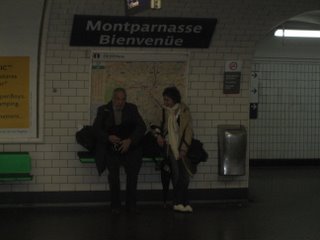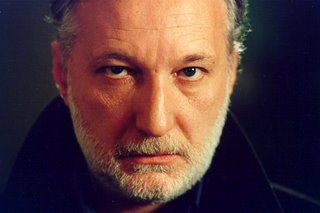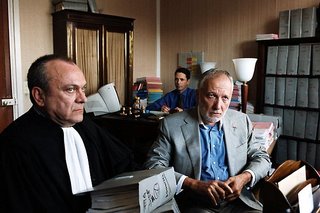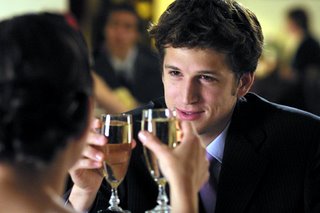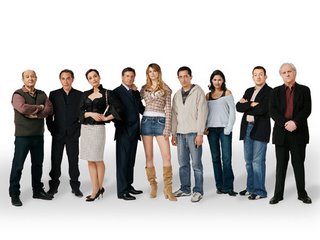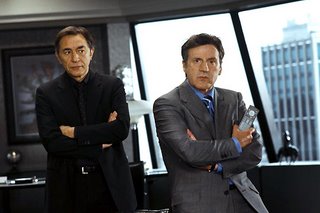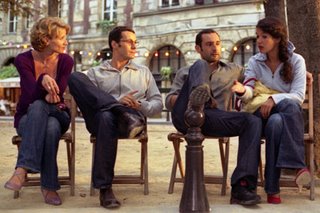


Guess Who Got Shot in Paris?
Hollywood Capitalizes on the Ile-De-France Region’s Film Production Resources
Lise Bouvier: Maybe Paris has a way of making people forget.
Jerry Mulligan: Paris? No. Not this city. It's too real and too beautiful to ever let you forget anything.
(An American in Paris, 1951)
For as long as there have been movies, there have been clichéd love stories set in the city of lights. Paris’ traditional landscape has been romanticized to the extreme by Hollywoodian love stories; sharing a sweet embrace on the Pont Neuf seems to be a rite of passage into big screen immortality. Think: Gene Kelly and Leslie Caron in An American in Paris, Billy Crystal and Debra Winger in Forget Paris, Kevin Kline and Meg Ryan in French Kiss, Diane Keaton and Jack Nicholson in Something’s Gotta Give. Filmmakers from around the world have fallen in love with France’s capital city and given life to the Parisian landscape on the big screen. In many of these films, Paris is not only a background setting, but is a major part of the plot, a character in its own right. With the new Mrs. Tom Cruise saying “I do” atop la Tour Eiffel and Brangelina recently shacking up in the 15th arrondissement, Paris has become the Hollywood love hot spot du jour. Carrie Bradshaw – almost! – followed her hunky dancer to Paris on the series finale of “Sex & The City” and, had Ross not arrived in the nick of time, Rachel Green of the hit series “Friends” would probably be working at the just- renovated Louis Vuitton flagship store on the Champs Elysées. The Bachelor in Paris recently watched Travis and Sarah find true love against the backdrop of the Eiffel Tower, and other cheesy tourist attractions. Though Paris has always been a favorite spot for filmmakers and film buffs alike, the Ile-de-France Film Commission has lately gone even further to promote filming in the region.
More and more films are being made in Ile-de-France, especially Paris. About 90% of the French cinema and audiovisual industry is based in Ile-de-France and Hollywood is following fast in its tracks. The Ile-de-France Film Commission’s goal is to identify projects in the planning stage and encourage promoters to use the Ile de France region for filming and production activity. While French films have always been eligible for local subsidies, the Ile-de-France has attracted myriad international productions, offering regional aid to projects if more than 50% of the footage is filmed in the Ile de France.
 According to Olivier-René Veillon, Executive Director of the Ile de France Film Commission, “We want the Ile de France region to be a major site for international film production.”
According to Olivier-René Veillon, Executive Director of the Ile de France Film Commission, “We want the Ile de France region to be a major site for international film production.”In 2005, the French capital was home to 662 film shoots, including 100 feature films, 90 short films, 150 TV fiction films and 54 documentaries. On a typical day from May through August every year, there are between 10 and 15 films being shot in the region, both French and international. In addition to The Da Vinci Code and Marie Antoinette, the Ile-de-France welcomed the cast and crew of Steven Spielberg’s Munich, Stephen Frears’ The Queen and popular French films including Danièle Thompson’s Fauteuils d’Orchestre, Claude Chabrol’s L’Ivresse du Pouvoir and Francis Veber’s La Doublure.
Last summer, cameras invaded the world’s largest cultural staple of art to film the movie version of Dan Brown’s international bestseller The Da Vinci Code, which will premiere at this year’s Cannes Film Festival on May 17th.
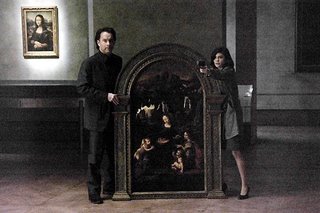
From June through August of last summer, Ron Howard’s team of professionals occupied the French capital – from the Louvre Museum, to the suburban Chateau de la Villette. It was hard not to notice the 87 trailers parked all around the Louvre, and filming took place on Tuesdays and at night, after the museum was closed to the public. According to Veillon, the challenge in filming The Da Vinci Code was finding a balance between the importance of such a central cultural monument and the grandeur of such a big-budget Hollywood film. Veillon attributes the success of the film shoot to the competence of the Paris police prefecture who assured that the numerous trailers found a place to park themselves in the Louvre’s constricted surroundings and secured the area for the high-profile cast and crew without disrupting Parisian daily life.
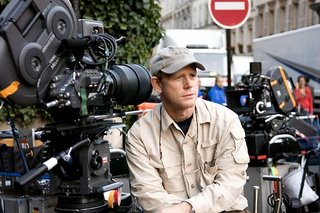
“If a movie like The Da Vinci Code can be filmed in the Louvre, it’s possible for any film to be shot in Paris,” Veillon told The Paris Times.
Not only did French Cultural Minister Renaud Donnedieu de Vabres allow the project to occur in his country’s most famed national palace, but he has been rallying for a more ubiquitous use of French cultural monuments in film. In January of last year, De Vabres invited presidents of France’s principal museums along with film producers in an effort to fuse cinematic production with the spread of French culture throughout the world. De Vabres urged the attendees to increase the number of film productions in national museums.
The cinema has proven itself to be a significant means of cultural transport. In fact, 62% of tourists visiting France claim to have chosen to come to France for their vacation after exposure to the country in a feature film. France’s recent efforts to open the doors of its most precious cultural establishments to film production is not merely a defense mechanism against the invasion of Hollywood’s monopoly, but a means of defending its patrimony. The marriage between film and culture not only attracts film crews to ameliorate France’s economic health and enhance its cultural influence, but it also brings jobs to thousands of local film crews struggling to find work in a Hollywoodian hegemonic world.
The Mona Lisa isn’t the only one rolling in the dough recently. Marie Antoinette is also taking in some big bucks from Columbia Pictures.
 Sofia Coppola shot Marie Antoinette, produced by her father Francis Ford Coppola and starring Kirsten Dunst, at the Chateau of Versailles, in particular Marie Antoinette’s apartments. The film will also premiere at this year’s Cannes Film Festival in May. The Versailles Château welcomed Coppola and crew with open arms.
Sofia Coppola shot Marie Antoinette, produced by her father Francis Ford Coppola and starring Kirsten Dunst, at the Chateau of Versailles, in particular Marie Antoinette’s apartments. The film will also premiere at this year’s Cannes Film Festival in May. The Versailles Château welcomed Coppola and crew with open arms. 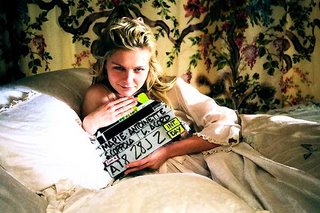 “I was very impressed by the way Sofia Coppola handled such a historically significant topic,” said Veillon, “I have a great deal of respect and admiration for her.”
“I was very impressed by the way Sofia Coppola handled such a historically significant topic,” said Veillon, “I have a great deal of respect and admiration for her.”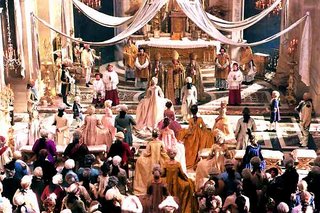

Yet Coppola is not the first to feature Versailles on the big screen; in fact, 160 films and 50 documentaries have been filmed in this historical palace. The Louvre last opened its doors in 1999 for “Belphegor,The Phantom of the Louvre” a mystery film about a ghost haunting the Louvre and stealing precious Egyptian artifacts.
Cannes will also be the home to the world premiere of Paris, Je t’aime, a series of shorts directed by 20 different film-makers invited from around the world to write and direct a five-minute film, each illustrating the timeless theme of romance in one of Paris’ 20 arrondissements. The stories were shot separately in both English and French, but woven together to create a coherent single narrative. Participating directors include such famous names as Joel and Ethan Coen, Olivier Assayas, Gus Van Sant, Isabel Coixet, Alexander Payne, Bruno Podalydès and Wes Craven. The casting credits read like a potpourri of the world’s most beloved actors: Gérard and Julie Depardieu, Nick Nolte, Emily Mortimer, Natalie Portman, Juliette Binoche, Elijah Wood, Willem Dafoe, Ludivine Sagnier and Maggie Gyllenhaal to give just a sample of the extraordinary cast.
In February, American director Hal Hartley was in Paris to shoot his latest film, Fay Grim, the sequel to 1997’s Henry Fool which stars Jeff Goldblum and Parker Posey.
Fay Grim was filmed in the prestigious Hôtel de Soubise.
And … Badabing! Paris also welcomed the cast and crew of hit US series, The Sopranos, from February 27-March 3 of this year. Under the direction of Tim van Patten and the supervision of Executive Producer Ilene S. Landress, actresses Edie Falco, Shannon Angela and Drea de Matteo brought an international dimension to the famous mafia drama. Spoiler alert!: After Carmela and Tony have a marital dispute, the lovely ladies of Prime Time head to Paris for an overseas escape including the fancy Raphael Hotel on the Champs-Elysées, dinner at the Grand Véfour, lunch at the Brasserie Pereire at the Place du Maréchal Juin, prayers at the église Saint Eustache, a quick tour through the markets at the Rue Lévis in the 17th arrondissement and a promenade that takes them from the Palais Royal gardens to the Pont Alexandre III. Not to mention a visit to the Musée du Moyen Age and the Cluny thermal baths. The Sopranos cast and crew all stayed at the Grand Hôtel on the rue Scribe.
 Woody Allen will be in Paris this summer filming his next movie, known only to date as the mysterious “Woody Allen Summer Project 2006.” David Krumholtz has recently signed up to star opposite Michelle Williams. This marks the first Allen film ever to shoot entirely in Paris and will be co-produced by Virtual Films and Wild Bunch, and distributed by TF1 International.
Woody Allen will be in Paris this summer filming his next movie, known only to date as the mysterious “Woody Allen Summer Project 2006.” David Krumholtz has recently signed up to star opposite Michelle Williams. This marks the first Allen film ever to shoot entirely in Paris and will be co-produced by Virtual Films and Wild Bunch, and distributed by TF1 International. “I am really looking forward to the opportunity to shoot a film in Paris,” Allen told the Ile-de-France Film Commission. “I have always had a wonderful experience when visiting there. Paris is one of the most beautiful cities in the world, and I know it is going to be a great place to work.”
As Jean Cocteau once said, “In Paris, everybody wants to be an actor; nobody is content to be a spectator.” Yet the recent films starring the famous city give Parisians good reason to head to the nearest cinema to watch the Ile-de-France come alive on screen. Un, deux, trois … Action!
Quote of the Day:
Among those whom I like or admire, I can find no common denominator, but among those whom I love, I can: all of them make me laugh.
- WH Auden
French Expression of the Day:
Marcher à côté de ses pompes.
Literally: To walk next to one's shoes. Figuratively: To be out of it.
Pastry of the Day:
Le Financier:

"A cake made from a sponge mixture using ground almonds and whisked egg whites." Like a Madeleine, and about as ubiquitous, the financier looks like a tasteless rectangular cake, but, when made well, has a light almond flavor and is a nice addition to an afternoon coffee.
